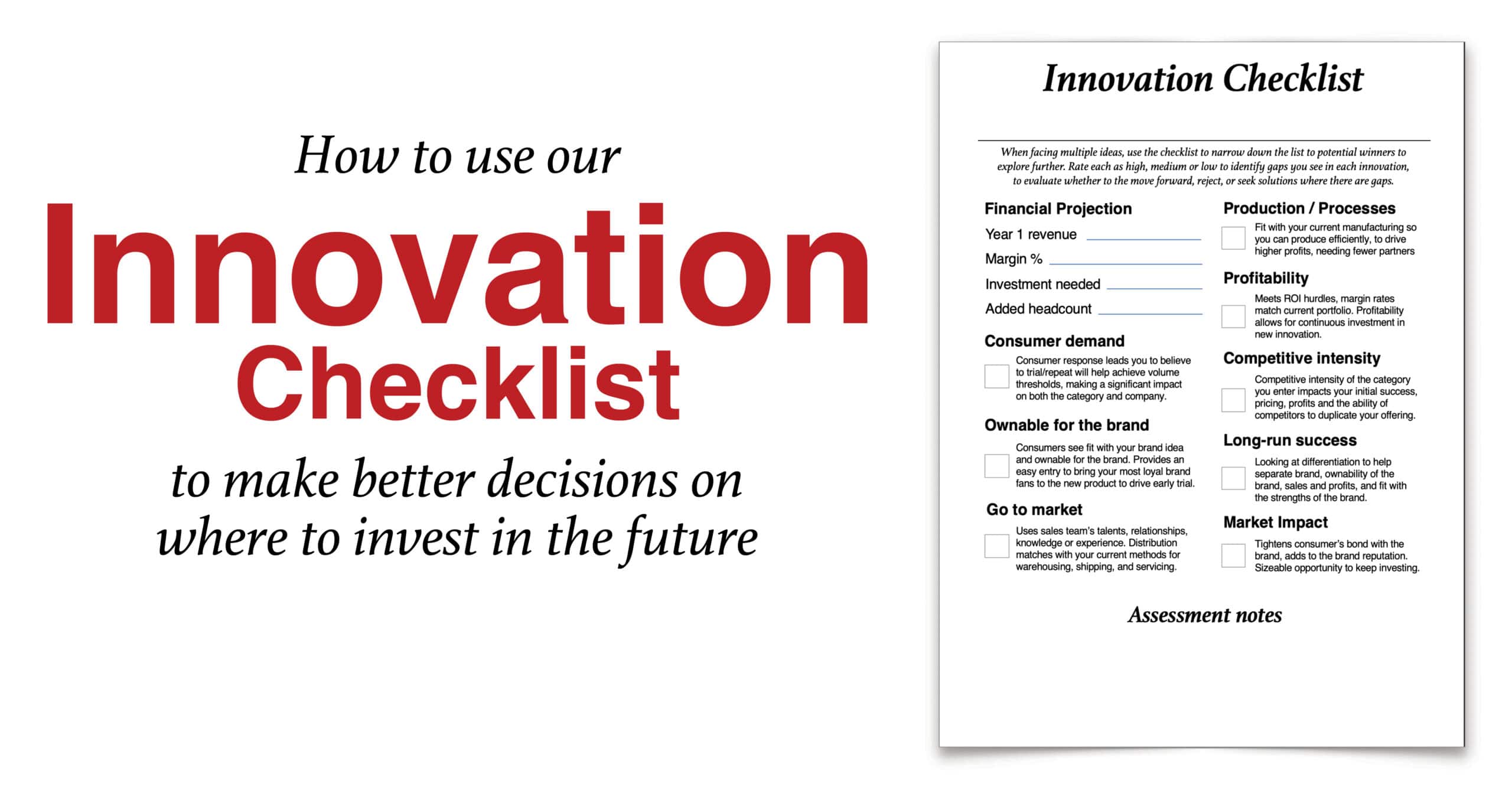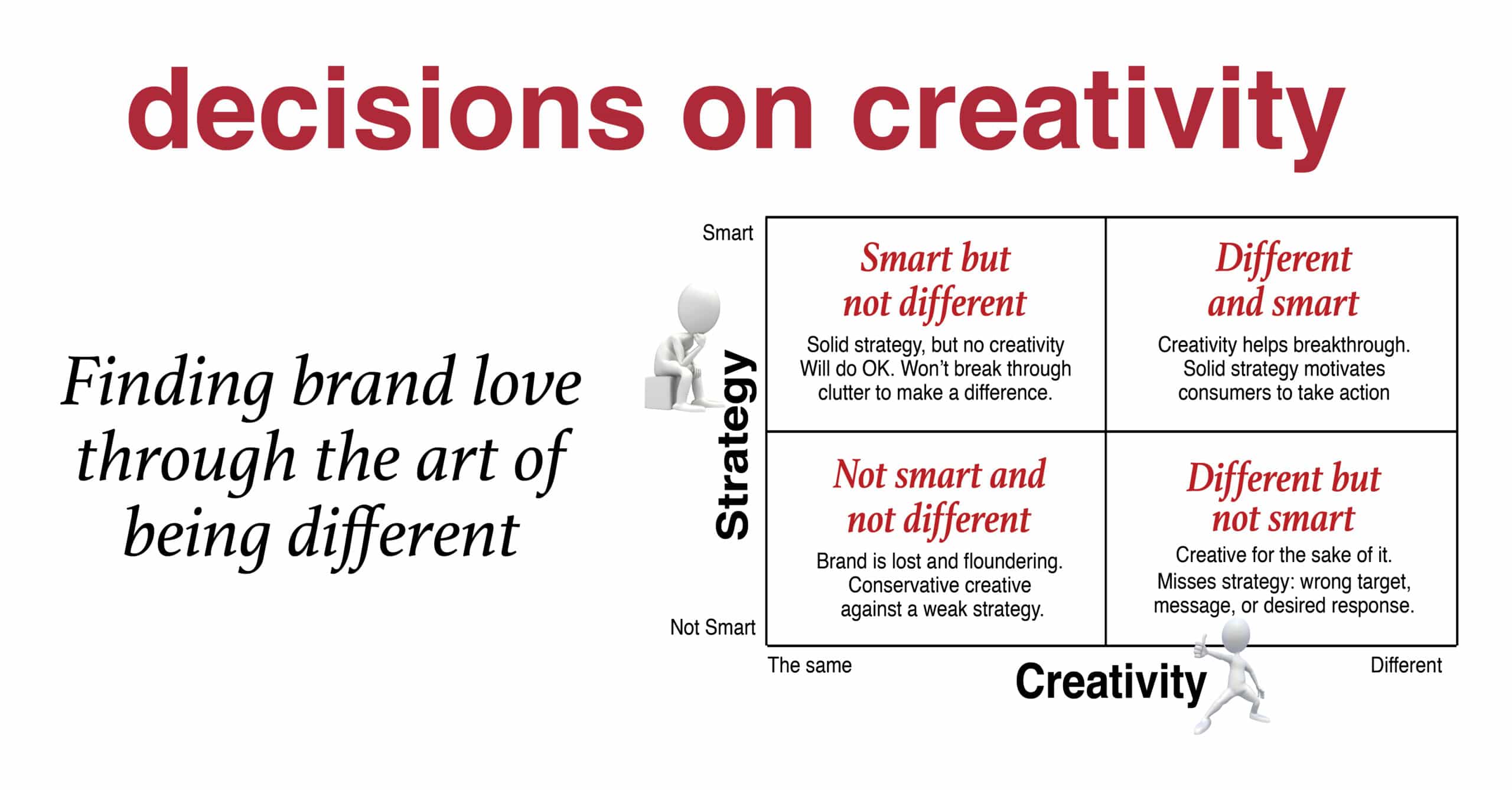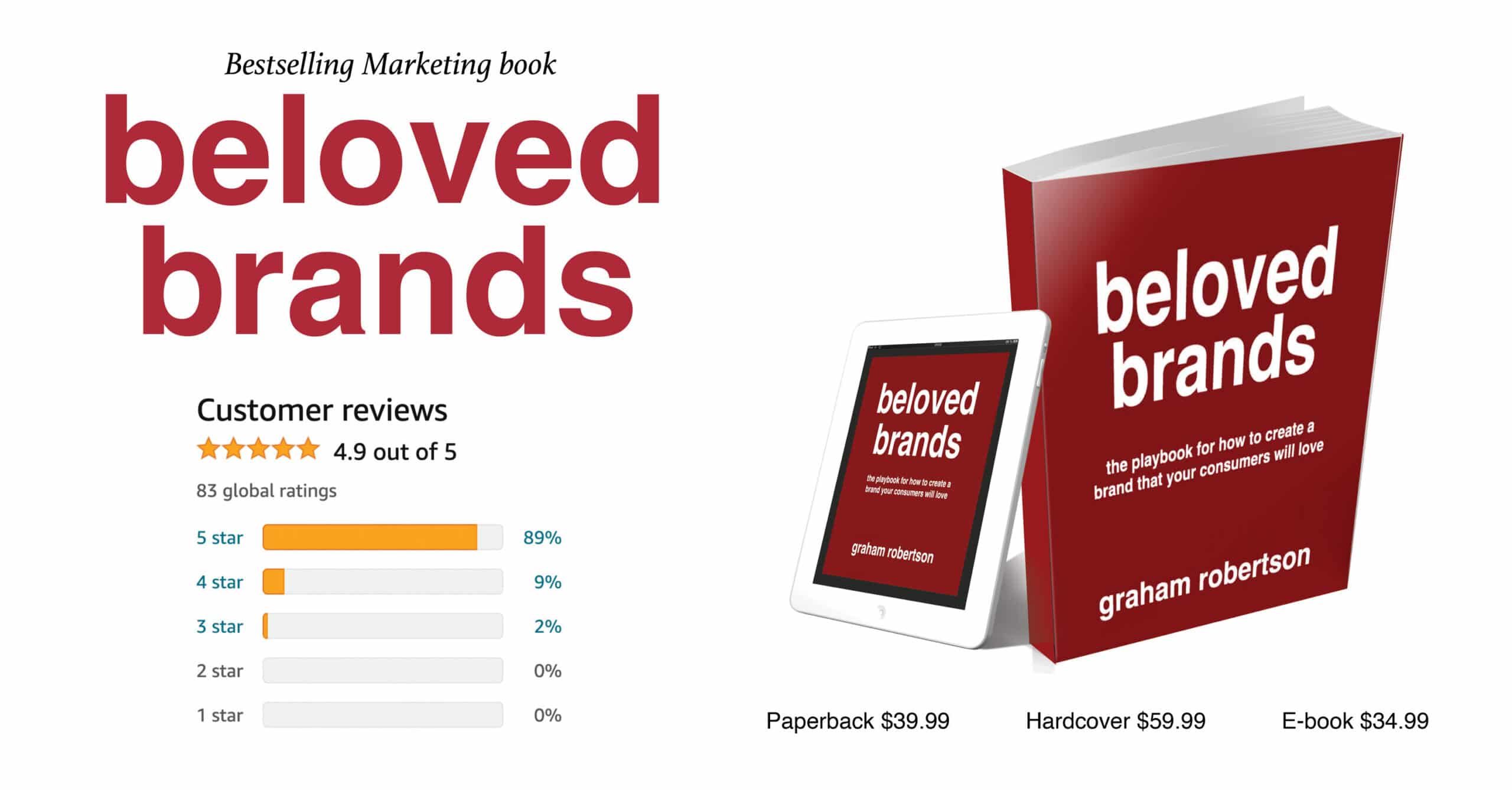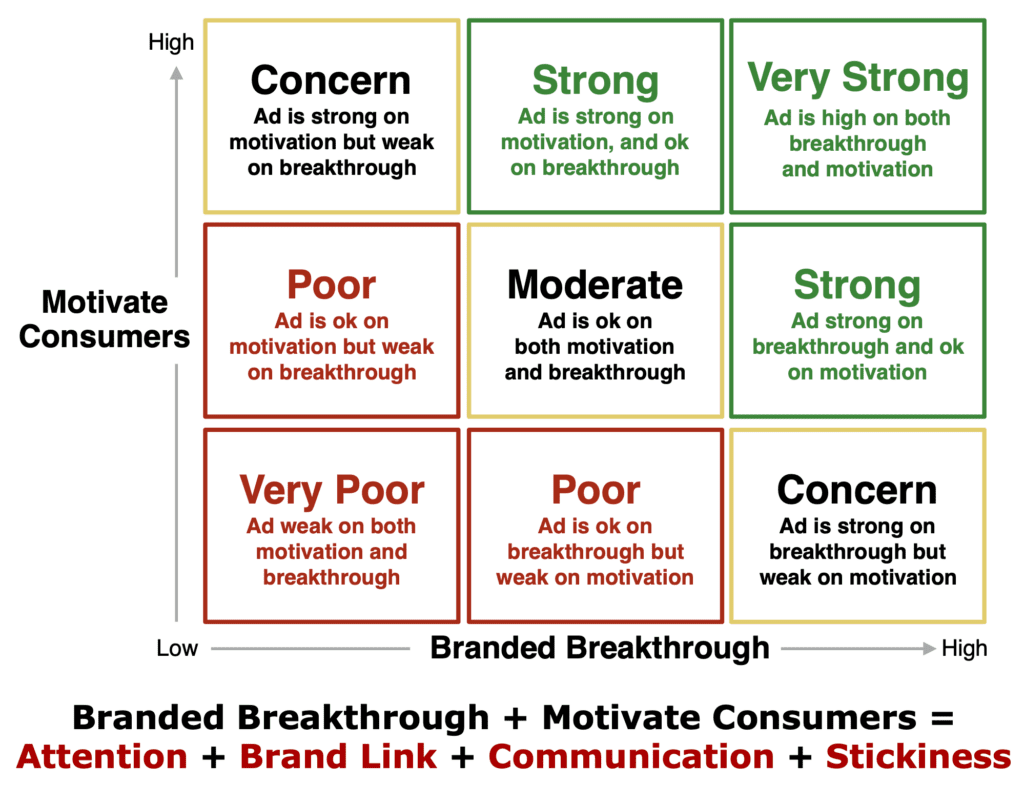Whether it is with advertising or new product innovation, brand leaders must embrace the art of being different. Too many new product launches follow the same formula: conduct a basic product concept testing, hope for a moderate pass, meet with sales and explain how this is almost identical to the launch we did last year and builds on the same thing we just saw our competitor do, re-enforce that the buyer hinted that if we did this, we’d get on the shelves pretty easily.
Go to your ad agency, with a long list of mandatories and an equally long list of benefits they can put in the ad. Tell the agency you’re excited. They’ll tell you they’re excited as well. Ask for lots of options, as a precaution because time is tight and we’re not sure what we want. Test all the ads, even a few different endings, and then let the research decide which one is best. That way, no one can blame you.
Do up a safe media plan with mostly TV, some small but safe irrelevant secondary media choice.
Ah, we have our launch.
You mistakenly think this is a guaranteed formula for success because it follows last year’s launch. And, you convince yourself that you had to play it safe because sales are down, margins are tight and you will do something riskier next year once this launch is successful. What looks like a guaranteed success will likely get off to a pretty good start and then flat-line until it will be discontinued three brand managers from now.
The fundamentals of marketing matter
The marketing fundamentals that we show in this article are part of what we use in our marketing training programs. Marketers will learn strategic thinking, brand positioning, brand plans, writing creative briefs, advertising decision-making, marketing analytics, and marketing finance.
The best new product innovation and advertising has to be both different and smart
At some point, to a breakthrough in a cluttered market, you have to do something different enough to stand out: now, more than ever. It might feel like a risky move, but it is almost riskier not to take that chance. Push yourself to be different.
Find the space that is smart and different
Smart but not different
These do better in tests than in the market, mainly because consumers have seen a similar idea before. In the market, these launches tend to get off to a pretty good start—since it still seems so familiar to consumers. However, once challenged in the market by a competitor, this launch tends to falter because people start to realize it is no different at all. So they go back to their usual brand and your launch starts to go flat. The option offers limited potential.
This option offers limited potential.
Smart and different
These launches don’t always test well: consumers don’t really know what to make of it. Even after launched, it can take time to gain momentum, having to invest in advertising to explain the story and you need to put in the effort to really make the difference come to life. Once consumers start to see the differences and how it meets their needs, they equate different with “good.” The new product begins to gain share and generates profits for the brand.
This option offers long-term sustainability.
Not smart and not different:
These are the safest of safe, likely a complete copy of someone else in the market. This happens when the pipeline is dry. You go back into the R&D lab and pick the best one you have–even if it is not very good. They do pretty well in tests because of their familiarity. What appears safe is actually highly risky. You should have followed your instincts and not launched.
This option is a boring failure.
Different but not that smart
This is what happens when marketers get focused on the product first instead of the consumer. And, these types of launches offers superior technology, but not really meeting an unmet need. So you launch what is different for the sake of being different. It does poorly in testing because the consumers do not get it. Everyone along the way wonders why we are launching. But in the end, consumers don’t really care about your point of difference, and it fails.
This is the better mousetrap that no one cares about.
Push yourself to be different
Brand leaders need to figure out how to separate good from the bad. One caution is letting market research over-ride your own instincts. Steve Jobs once said: “it’s hard for consumers to tell you what they want when they’ve never seen anything remotely like it. Yet now that people see it, they say OH MY GOD THAT’S GREAT.”
As a marketer, we tracked many numbers (awareness, brand link, persuasion, etc), but the one I always wanted to know how we were doing on was “made the brand seem different.”
Whether it is new products, a new advertising campaign or new media options, always push yourself to do something that stands out. Don’t just settle for ok. Always push for great. If you don’t love the work, how do you expect your consumer to love your brand? Afterall, the opposite of different is indifferent and who wants to be indifferent.
In case you need any added incentive: Albino fruit flies mate at twice the rate of normal fruit flies and the place where most groundhogs are run over is right in the middle of the road.
Advertising decisions
The best brand leader plays the most crucial role in the creative advertising process. While they are not designed to be experts, they need to know enough to make advertising decisions, but never enough to do the work.
Our creative advertising checklist
In your next creative advertising meeting, you should think fast with your instincts, while trying to represent your consumer. View the advertising through the eyes of your consumer. Try to see the work how they would see it. When I was in marketing, I would not even let my agency do a setup to the ads. I said, “Just show me the work as though I see it on TV.” Any setup or explanation clouded my judgment and impacted my instincts.
As you are sitting in that decision-making hot seat at a creative meeting, explore using our advertising checklist. Click here to read more.

Product Innovation
Our Innovation Checklist is designed to help brand leaders compare innovation ideas. It is a decision-making tool to help sort through various factors to compare and decide which ideas to move through the innovation process. It looks at the potential of the idea in terms of consumer demand and competitive intensity to help figure out if it will meet the sales and profit threshold level.
Moreover, the innovation checklist looks at the fit with the brand, looking at how well it fits with the brand idea, and how well it can fit with the company’s strengths such as manufacturing, sales, distribution, and servicing.

M A R K E T I N G B O O K
b2b brands
the b2b playbook for how to create a brand your customers will love
As a B2B marketer, you know that the key to driving growth is a strong brand. But how do you develop and execute a winning B2B brand strategy? Look no further than the B2B Brands playbook.
Prepare to think differently about your B2B brand strategy with B2B Brands. We want to challenge you with thought-provoking questions and take you through our process for defining your brand positioning. Our goal is to expand your mind to new possibilities for your brand by using real-life examples of successful B2B brand positioning strategies.
We’ll start by showing you how to create a brand plan that’s easy for everyone to follow, ensuring that all stakeholders understand how they can contribute to your brand’s success. Moreover, we guide you through the creative execution process, including how to write an inspiring brief and make decisions to achieve smart and innovative communications.
Finally, we’ll teach you new methods to analyze your brand’s performance through a deep-dive business review.
Our B2B Brands playbook offers a wealth of knowledge and insights, including B2B case studies and examples to help you learn new techniques. It’s no wonder that 85% of our Amazon reviewers have given us a 5-star rating. So, join us on this journey to unleash the potential of your B2B brand.










